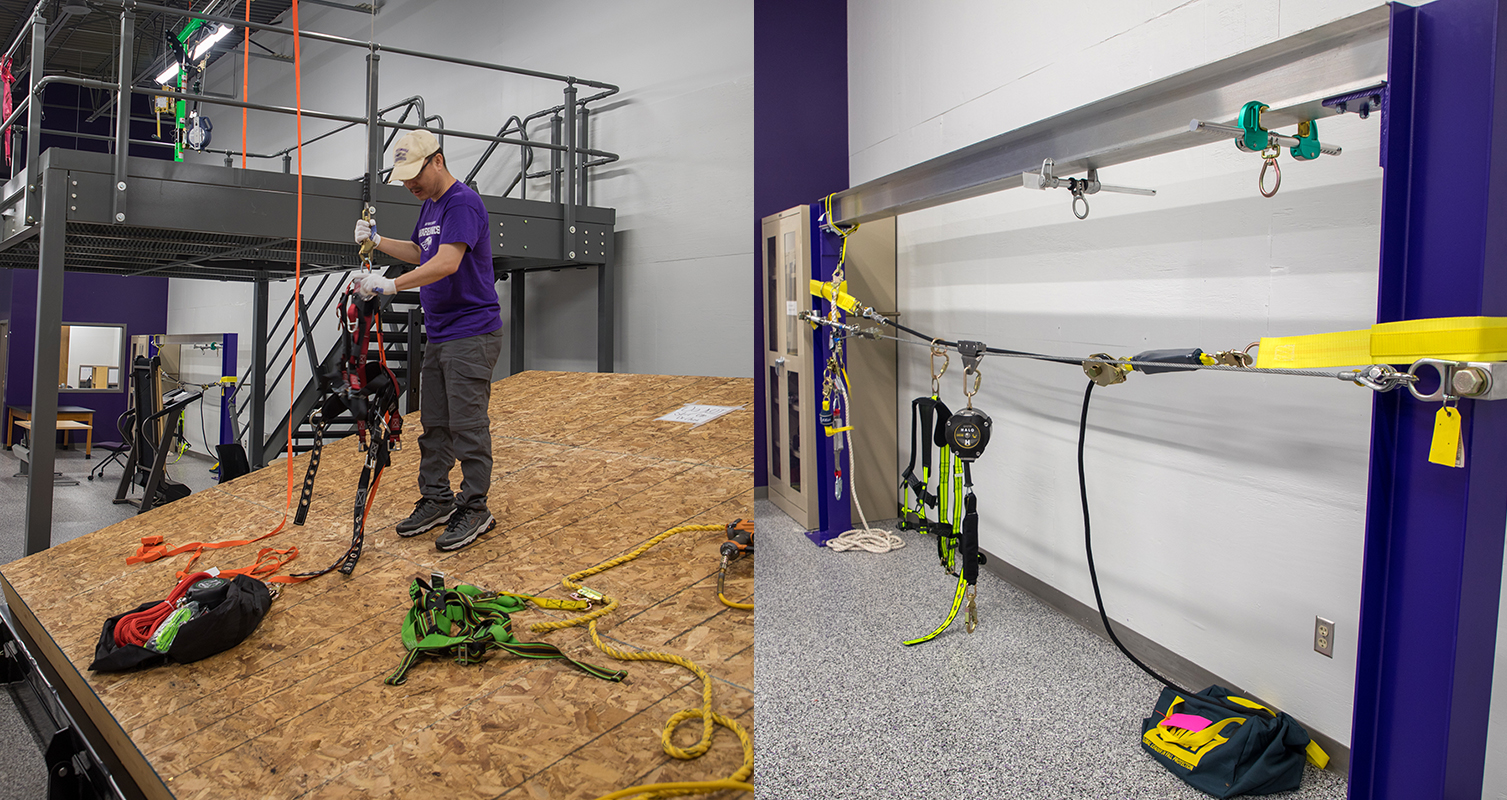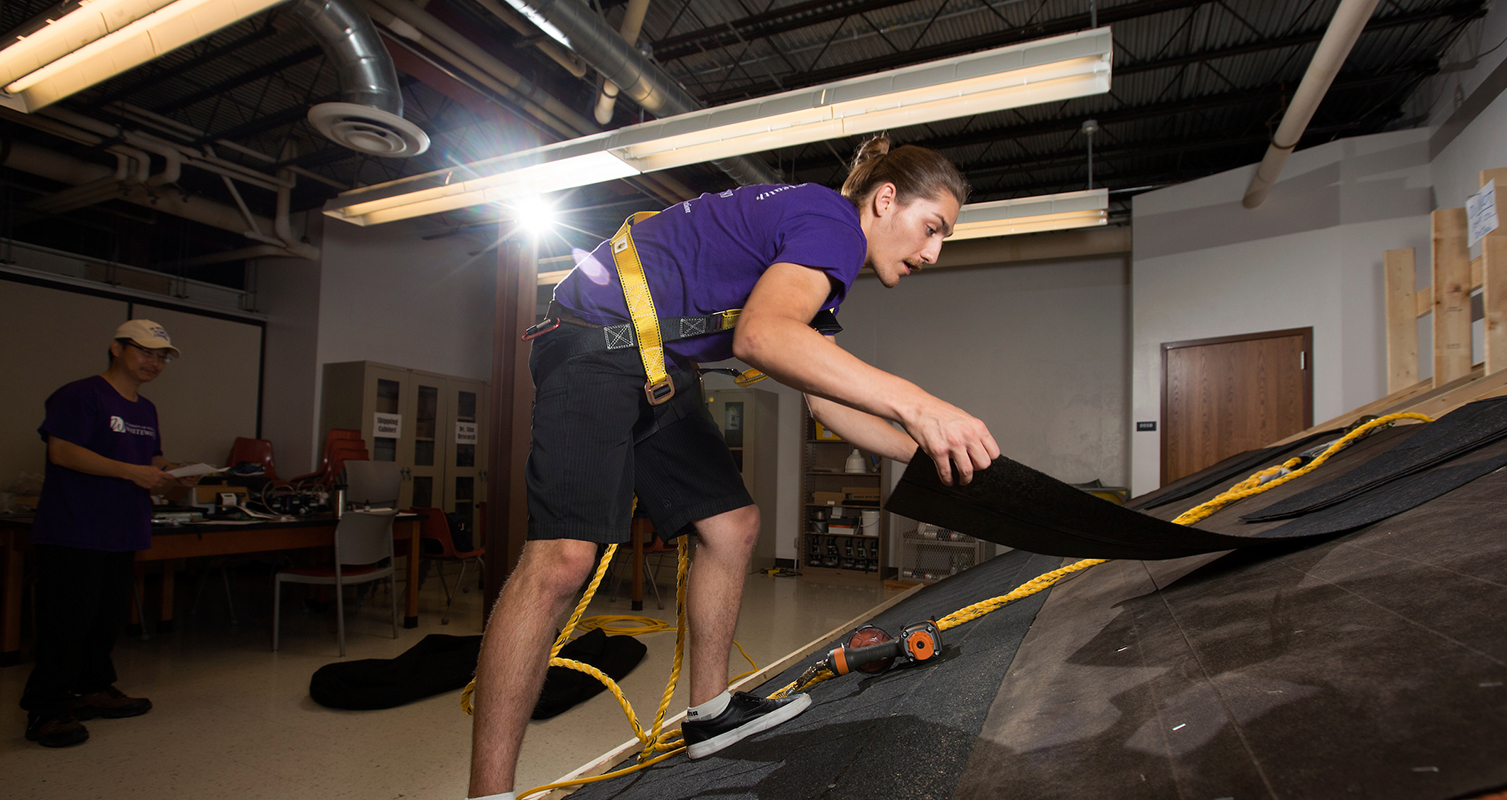Research on a Focus Four hazard helps safety professionals protect workers
September 27, 2021
Written by Dana Krems | Photos by Nick Pook and Craig Schreiner
Construction workers face many job site hazards, but four causes of workplace fatalities are so prevalent that they have been named Focus Four Hazards by the Occupational Safety and Health Administration. In 2019, the National Institute for Occupational Safety and Health at the Centers for Disease Control and Prevention estimated 36.4 percent of work-related deaths in construction were due to one of these hazards — employee falls.
Sang D. Choi, professor of occupational and environmental safety and health at the University of Wisconsin-Whitewater, has extensively researched fall risk factors and prevention measures. Through his collaboration with NIOSH at the CDC, as well as the American Society of Safety Professionals and other positions tied to industry, he has worked to bridge the gap between academia and the safety profession.
Choi’s early interest in construction safety and occupational ergonomics led to his doctoral dissertation on fall prevention in residential roofing. To test his hypotheses, he designed a workstation that could simulate roofing tasks at 18-, 26-, and 34-degree pitches. The results could be applied to reducing the risk of occupational injuries and fatalities while improving productivity.
After completing his Ph.D. in 2003, he brought his passion and subject matter expertise to UW-Whitewater. In 2016, with a summer grant and assistance from Connor Carrington ‘17, then a student in the Bachelor of Science in Occupational Safety program, Choi built a workstation model in the lower level of the Ambrose Health Center.
This workstation has been adapted and improved for the new safety lab in the UW-Whitewater Community Engagement Center. The lab will be fully operational this fall and used for training, select classroom activities and collaborative OESH projects.
“It is important for future safety professionals to have a research-based understanding of the factors contributing to falls,” said Choi. “The safety lab provides a controlled environment for experimenting with these concepts. Students can also evaluate the pros and cons of different fall prevention systems.”
Choi has made significant contributions to academia and the safety profession during his 18 years of service at UW-Whitewater and continually seeks to integrate his research into the OESH practice. He was invited to work with NIOSH in 2020, where he recently contributed to the 8th annual Stand Down for Falls campaign.
Further, in collaboration with Jim Borchardt, a 50-year veteran of the safety industry and principal of Construction Ergonomics LLC, Choi designed and adopted the “Research to Practice – Practice to Research” model. The model conveys the continuous improvement that occurs when academia translates research findings into best practices, then practitioners feed exposures back to researchers for control strategies. Borchardt and Choi have actively promoted the RtPtR model to safety practitioners and academic researchers in the ASSP.
Choi plans to advance his efforts in academia and industry in order to improve worker safety. He also remains passionate about mentoring students.
"Through my teaching, I share my passion for knowledge and curiosity, inspire students’ creativity, develop their critical thinking ability, and prepare them for the real-world they will face after stepping off campus. I believe that teaching is not just a way to impart knowledge, but can also be used to foster interest in the subject.”
Along with teaching construction safety and occupational ergonomics in the bachelor's program, he currently teaches ergonomics in construction and system safety analysis in the online Master of Science in Environmental Safety and Health.
For more information, contact Sang Choi at 262-472-1641 or chois@uww.edu.


